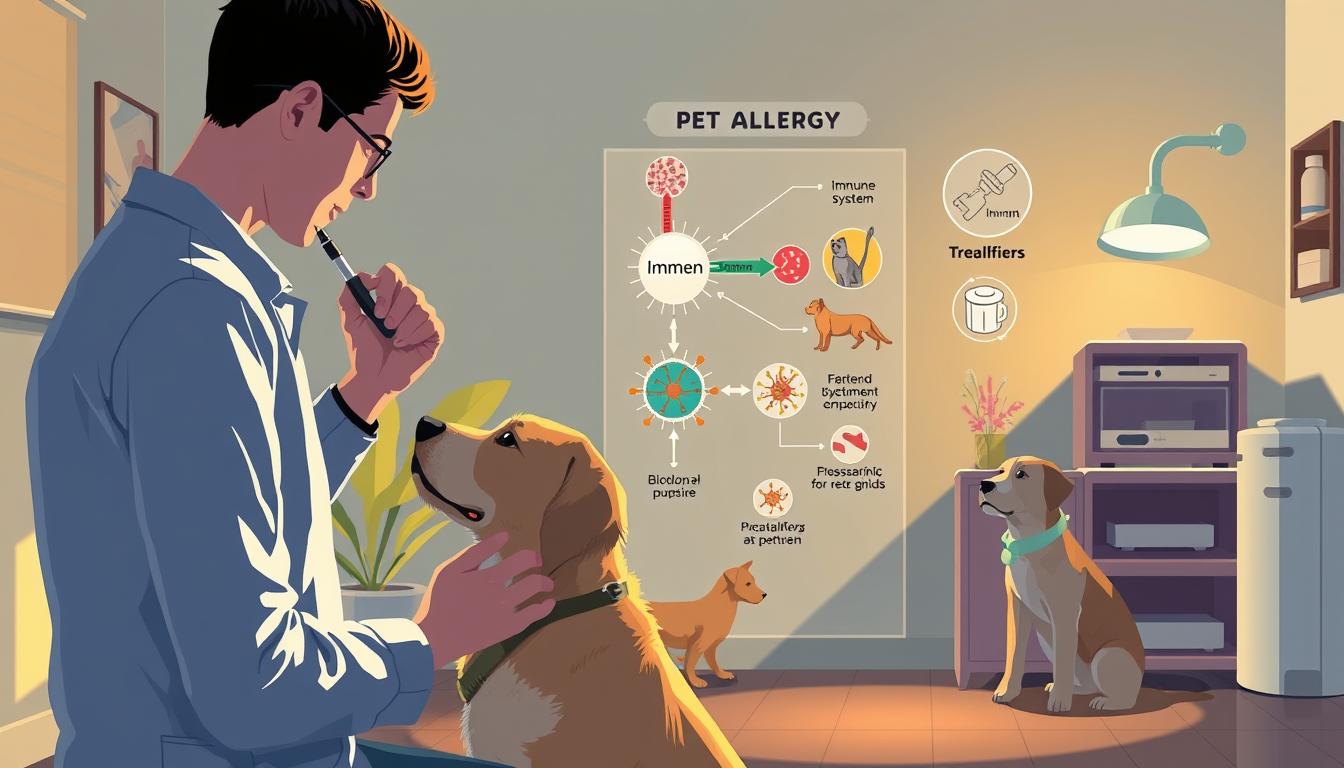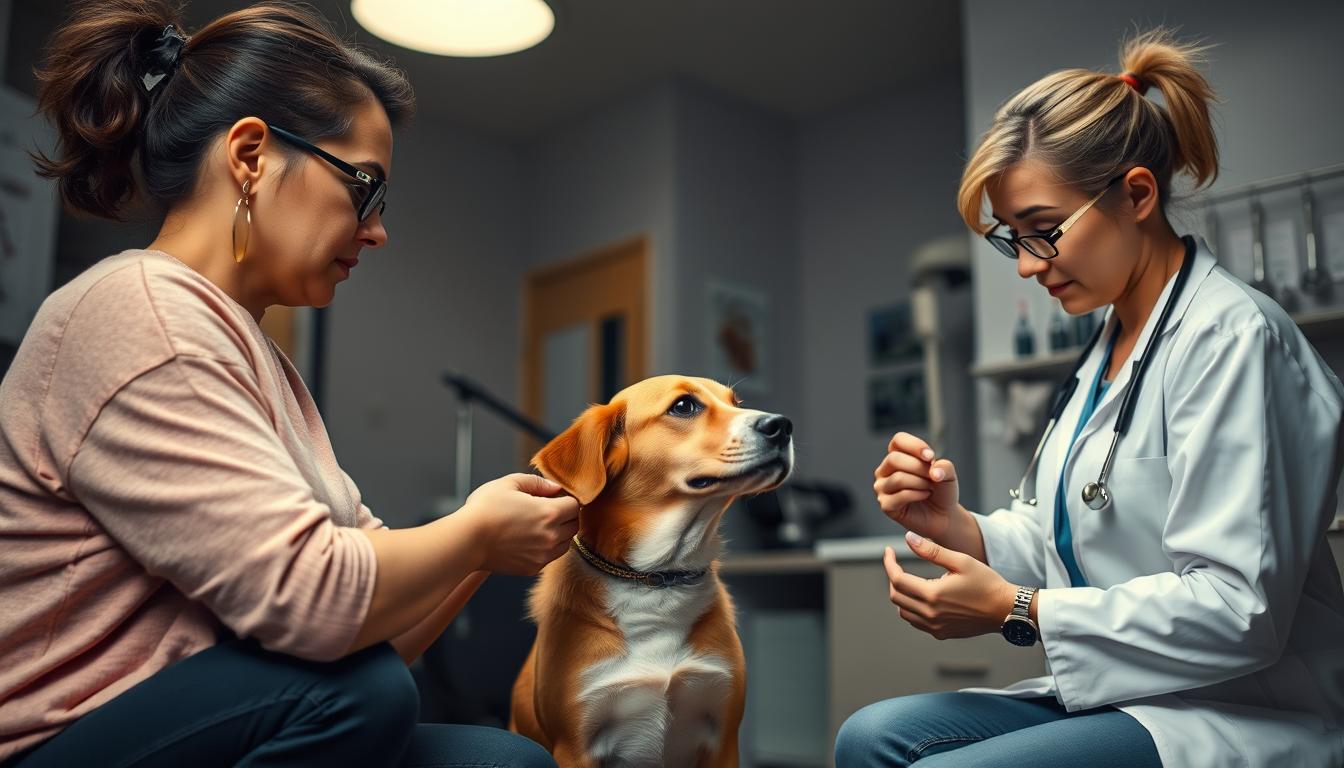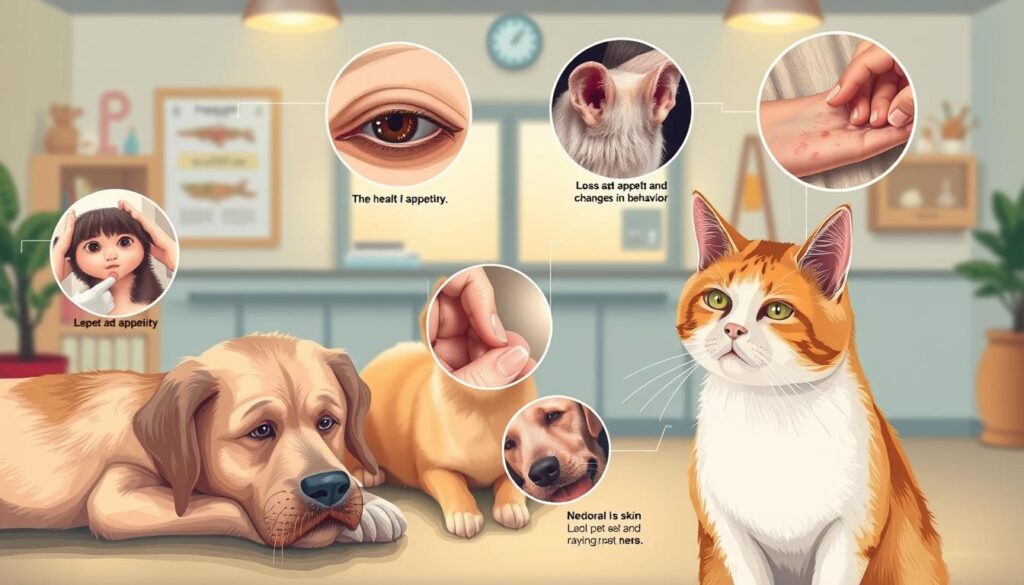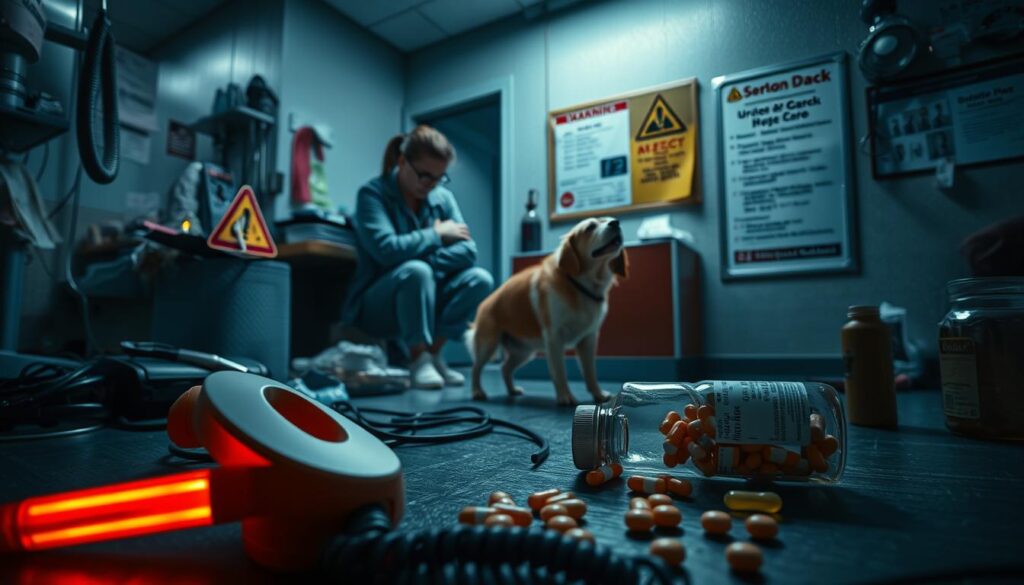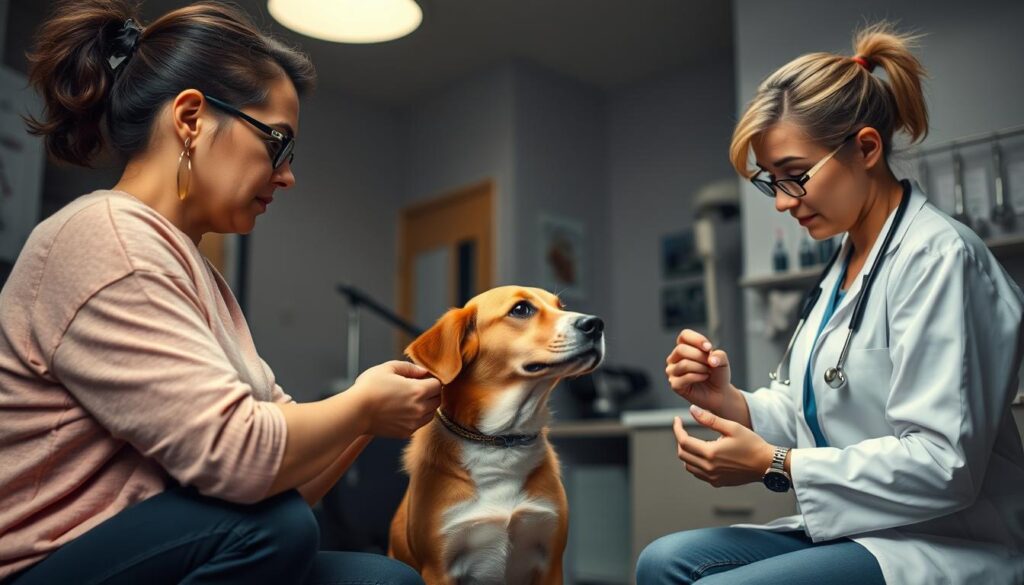Imagine stepping into a friend’s home and suddenly your eyes water and your throat itches. A simple visit to the park with a dog-loving friend can leave you sneezing for hours. For millions of Americans, this is a common experience.
With 1 in 5 people experiencing allergic reactions to pets, it’s tough to balance love for pets and health. This guide aims to help you understand pet allergies better. We’ll explore the science behind them and offer practical solutions.
Allergic reactions to pets can happen anywhere, whether it’s your own pet or a neighbor’s cat. But why do these reactions occur? And how can you enjoy time with animals without feeling miserable?
This guide will break down the science behind pet allergies. We’ll look at dander and proteins in pet saliva as triggers. We’ll also provide steps to manage symptoms. Let’s dive in—your sniffles might find relief.
What Are Pet Allergies and Why Do They Occur?
Understanding pet allergies begins with how your body reacts to animals. When your immune system sees pet proteins as threats, it overreacts. This leads to symptoms like sneezing or itchy eyes.
The Science Behind Allergic Reactions to Pets
Your immune system makes IgE antibodies when it meets pet proteins. These antibodies release chemicals like histamine, causing inflammation. Proteins from dander, saliva, or urine are common culprits.
Common Misconceptions About Pet Allergies
- Myth: “Pet fur causes allergies.” Fact: Proteins in dander and saliva are the real triggers, not the fur itself.
- Myth: “Hypoallergenic breeds are safe.” Fact: No pet is entirely allergen-free, though some produce fewer proteins.
- Myth: “Short-haired pets are better.” Fact: Allergen levels depend on protein production, not hair length.
Are Some People More Susceptible to Pet Allergies?
Family history matters: if allergies run in your family, you’re at higher risk. Early exposure to pets can also affect your sensitivity. Those with asthma or other allergies may react more strongly. Knowing these factors helps manage your health around pets.
Common Triggers: Beyond Just Pet Dander
Pet dander is a big allergy problem, but it’s not the only one. Allergens from saliva, urine, skin cells, and bedding also cause issues. These particles can stay in your home for a long time, making allergies worse even when your pet is gone.
and dogs have proteins in their saliva that can stick to things. These proteins are hard to get rid of. When it’s humid or air is stale, these allergens stay inside. Even simple actions like pets scratching or licking can spread allergens around.
Here’s how to spot hidden triggers:
- Check for sticky spots on furniture where pets groom themselves
- Look for dust buildup around pet sleeping areas
- Monitor airflow in rooms where pets spend most of their time
Knowing what allergens are present helps you find solutions. For instance, HEPA air purifiers can clean the air. Washing pet bedding often can also help. By understanding these triggers, you can keep your home safe for you and your pet. Making a few changes can greatly improve your allergy situation.
Understanding Pet Allergies: Causes & Solutions
At the heart of understanding pet allergies: causes & solutions lies the science of pet proteins. These tiny molecules, found in saliva, dander, and fur, trigger your immune system’s overreaction. Let’s break down how these proteins work and how to tackle them effectively.
The Role of Pet Proteins in Allergic Reactions
Cats produce Fel d 1, a protein found in their skin and saliva, while dogs release Can f 1. Even rabbits and birds release unique proteins that can cause symptoms. When inhaled or touched, these proteins trick your body into attacking harmless substances, leading to sneezing, itching, or wheezing.
Why Different Pets Cause Different Reactions
Not all pets are created equal when it comes to allergens. For example:
- Cat allergies affect 10–20% of people, often worse than dog allergies
- Rodents and birds release lighter, airborne proteins that linger longer
- Hypoallergenic breeds, though, can also cause allergies, just at lower levels
Breaking Down Solutions for Different Allergy Types
Effective pet allergy remedies depend on your symptoms. For managing pet allergies:
- Respiratory issues: Use HEPA air filters and nasal sprays
- Skin reactions: Apply hydrocortisone creams or oatmeal baths
- Severe cases: Consult an allergist for immunotherapy options
By pinpointing which proteins affect you, you can tailor strategies like washing hands after petting animals or using allergy-friendly bedding. Small changes can make a big difference in keeping both you and your pet healthy.
Recognizing Pet Allergy Symptoms: From Mild to Severe
Spotting pet allergy symptoms early can prevent discomfort and health risks. Allergic reactions to pets vary, but knowing what to watch for helps you take action quickly.
Respiratory issues often start with sneezing or a runny nose. Look for these signs:
- Repeated sneezing fits
- Constant runny or stuffy nose
- Coughing or wheezing
- Chest tightness or shortness of breath
These symptoms may linger longer than a cold. Wheezing could signal asthma linked to pet allergies.

Skin reactions like hives or rashes often appear after contact with pets or their belongings. Common signs include:
- Itchy, red bumps on skin
- Rash outbreaks on arms, face, or hands
- Scaly patches from eczema
Direct contact with pets can cause allergic reactions to pets, like contact dermatitis, leading to prolonged itching.
Seek medical help immediately if you experience:
- Difficulty breathing or rapid wheezing
- Swelling of lips, tongue, or face
- Rashes that spread or worsen despite OTC medications
Never ignore severe symptoms. Early care prevents complications. Talk to a doctor if symptoms persist beyond a few days.
Proven Treatment Options for Pet Allergy Relief
There are many ways to treat pet allergies so you can spend more time with your pet. This guide will show you how to lessen reactions with medicines, therapies, and changes in your daily life.
- Antihistamines: You can buy Claritin or Zyrtec over the counter. They stop histamine from being released. Second-generation ones, like Claritin, make you less sleepy than first-gen ones, like Benadryl.
- Nasal sprays: Doctors can prescribe corticosteroids like Flonase. Use it every day to see the best results.
- Leukotriene inhibitors: Singulair stops chemicals that make airways swell. It’s good for keeping symptoms away for a long time.
- Immunotherapy: Allergy shots or tablets like Grastek can make you less sensitive over time. You’ll need to keep getting them for months.
For long-lasting symptoms, mixing these treatments with home tips works best. Think about using air purifiers with HEPA filters and washing your bedding every week. This can help reduce allergens.
- Nasal irrigation: Saline rinses can clear out allergens from your nose.
- Natural supplements: Some studies suggest that Quercetin and butterbur might help. But always talk to your doctor before trying them.
- Air filtration: HEPA air purifiers can catch dander and proteins in the air that cause reactions.
Work with an allergist to make a plan that’s just right for you. Regular check-ups are key to making sure your plan keeps working. By mixing medicines, lifestyle changes, and expert advice, you can find relief without losing your pet.
Prevention Strategies: Minimizing Exposure While Keeping Your Pets
Managing pet allergies doesn’t mean you have to choose between your health and your pet. Follow these pet allergy prevention steps to reduce pet dander and avoid pet allergy triggers. This way, you can keep your pets without harming your health.
Creating Allergen-Free Zones in Your Home
Make some areas of your home pet-free, like your bedroom. This helps keep your sleep area clean. Use HEPA air purifiers in common areas to catch pet dander in the air.
Also, get allergen-barrier mattress and pillow covers. They block allergens well. For example, Allergy Relief Solutions’ covers block 99.9% of allergens.
Best Cleaning Practices for Pet Owners
- Vacuum daily with HEPA-filter machines like Dyson Animal or Shark Pet Pro.
- Dust surfaces weekly with microfiber cloths that trap, not spread, allergens.
- Wash pet bedding and your own weekly in hot water (130°F) to remove proteins causing reactions.
Hypoallergenic Pet Options: Fact vs. Fiction
No breed is truly hypoallergenic, but some produce less Fel d 1 protein. Studies show breeds like poodles or Siberian cats may shed less dander. The American Academy of Allergy, Asthma & Immunology notes regular grooming reduces allergen buildup.
Don’t overvalue breed labels—focus on consistent care routines instead.
Living Your Best Life Despite Pet Allergies
Managing pet allergies doesn’t mean you have to give up pets. You can enjoy time with animals while keeping symptoms in check. Simple steps like washing hands after petting, changing clothes after play, or taking allergy meds before interactions help a lot. These actions reduce exposure to allergens and ease reactions.
Modern solutions like HEPA air purifiers (e.g., Dyson or Honeywell) trap airborne allergens. Hypoallergenic pet foods (like Hill’s Prescription Diet) and enzyme-based sprays (e.g., Allersearch) also help. These tools reduce dander and proteins causing reactions, supporting pet allergy prevention.
Many people successfully balance their love for pets with their health. Some use weekly vacuuming with HEPA vacuums (e.g., Miele) to trap pet dander. Others set up pet-free zones in bedrooms to rest symptom-free. These tailored approaches show that pet allergy remedies work when personalized to your lifestyle.
Create your own plan using strategies from this guide. Start by identifying your main triggers and matching them to solutions. Keep a symptom diary to track what works best. Small changes today can lead to bigger improvements over time, letting you stay active with pets without constant discomfort.
